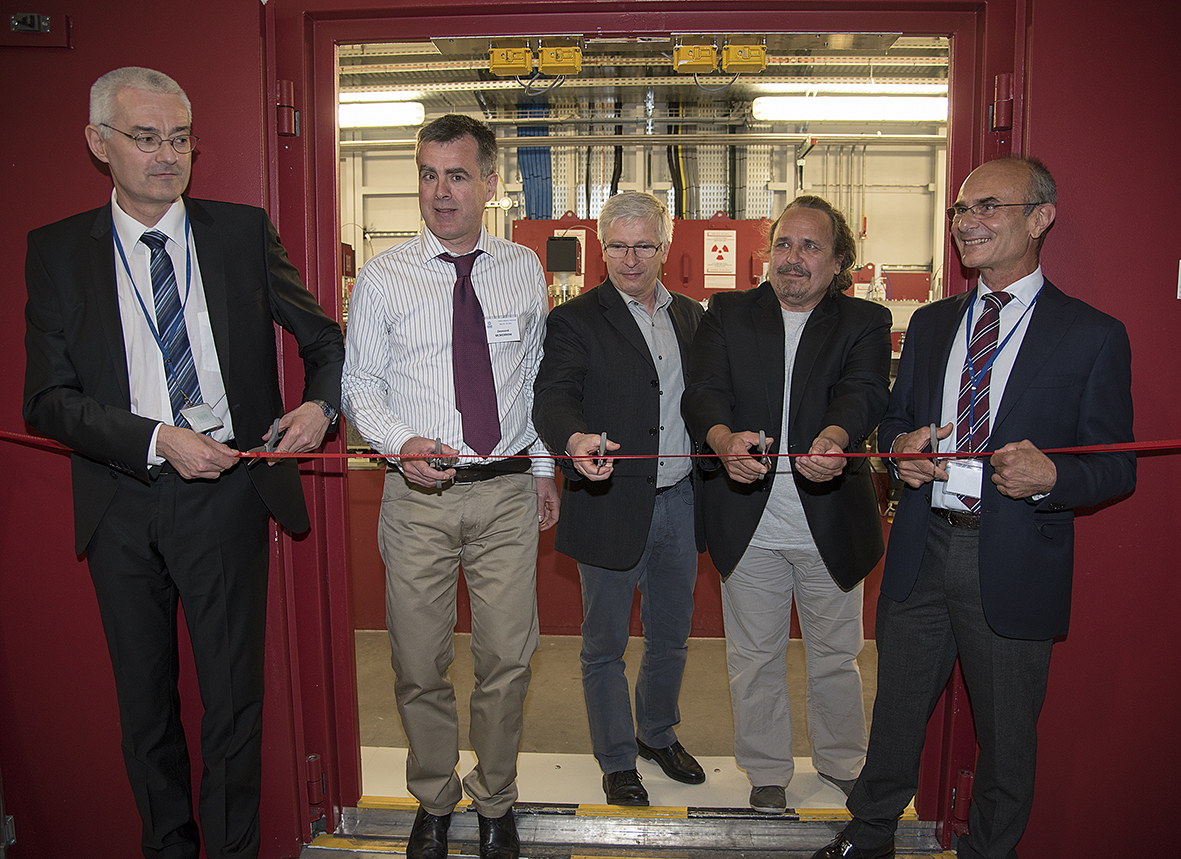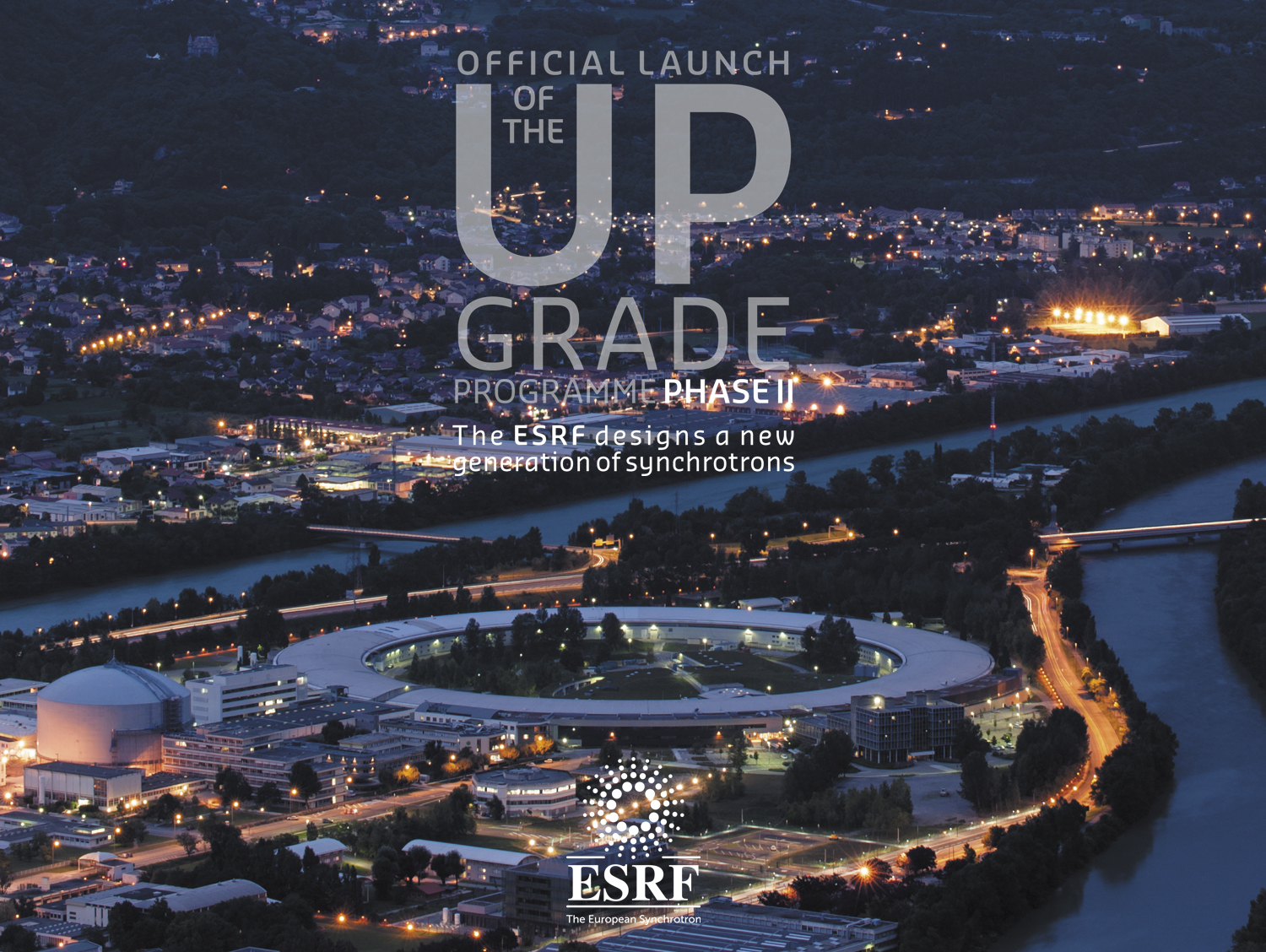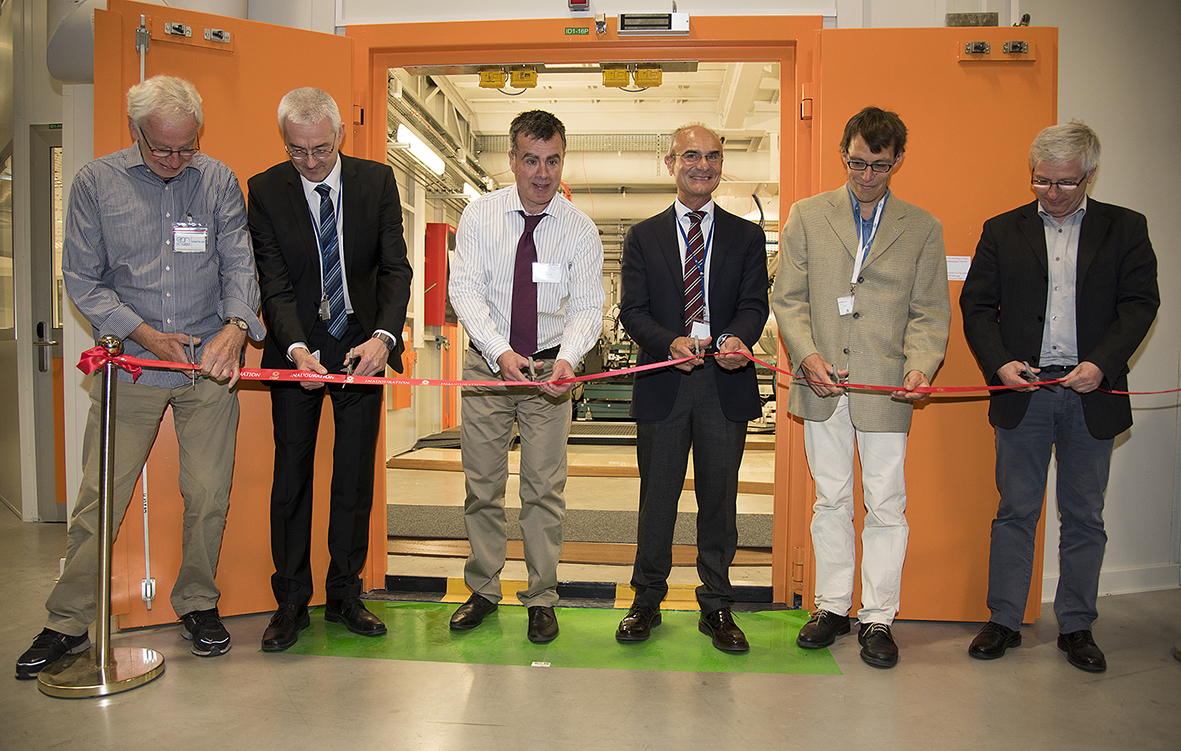- Home
- News
- General News
- The ESRF launches...
The ESRF launches a new generation of synchrotrons
28-05-2015
Today the ESRF officially launched Phase II of its innovative renovation project, the Upgrade Programme. The highlight and major technological challenge of this second step is the creation of an ultra-bright synchrotron source with performances 100 times superior to present day synchrotrons worldwide.
Taking the opportunity of the first meeting of the new Science Advisory Committee, the ESRF Director General, Francesco Sette, the Chairman of the SAC, Desmond McMorrow, and the Vice-Chairman of the ESRF Council, Miguel Angel Garcia Aranda, officially launched UP-PII - Phase II of the Upgrade Programme, with a ribbon-cutting ceremony and press conference.
The technological challenge of Phase II (2015-2022) is to shutdown and dismantle the existing accelerator and install a new X-ray source in its place, while causing minimal disruption to the ongoing user programme. The performance of the storage ring will be boosted to increase the brilliance and coherence of the X-ray source by a factor 100, thus writing a new chapter in X-ray science and opening a new window on the nanoworld.
|
Ribbon-cutting ceremony to inaugurate beamline ID01. Image/Jarnias/ESRF |
"Over the years the ESRF has become a world reference. By means of the Upgrade Programme and thanks to the enthusiastic and collective support of the ESRF's Members and Associate Countries, the ESRF is preparing for the future by constructing the first in a new generation of synchrotrons." F. Sette. |

Inauguration of beamline ID31. Image/Jarnias/ESRF
From left to right: H. Reichert, ESRF Director of Research, D. McMorrow, Chairman of ESRF SAC, J. Susini, ESRF Director of Research, V. Honkimaki, ESRF Scientist and Beamline Responsible, F. Sette, ESRF Director General.
Initiated in 2009, the ambitious Upgrade Programme will extend until 2022 and is implemented in two phases. Phase I, which will complete on time and within budget end 2015, enabled the construction of a new generation of beamlines to explore the nanoworld, and 19 experimental stations were built or completely refurbished. A new ultra-stable experimental hall of 8000m2 was required as well as the enhancement of the scientific equipment and accelerator infrastructure.
"The ESRF will lead the way in pushing back the boundaries of scientific exploration of matter. Sustaining its world-class user programme will contribute to answering the great technological, economical, societal and environmental challenges confronting our world", emphasised Francesco Sette, ESRF Director General, at the ribbon-cutting ceremony.
Phase II includes also the construction of new state-of-the-art beamlines, an ambitious instrumentation programme focussed on high performance detectors and an intensified "big data" strategy, designed to exploit the enhanced brilliance, coherence flux and performances of the new X-ray synchrotron source. The user programme will be put on hold from end 2018 to June 2020 while the accelerator is dismantled and the new source installed and commissioned.
Press conference for the launch of Phase II of the Upgrade Programme, ESRF Visitor Centre. Image/Jarnias/ESRF
The Upgrade Programme represents a qualitative leap that will open new fields of investigation at the nanometre level, enabling unprecedented understanding of materials and living matter. Applications can be found in a variety of areas and include nanoscopy for the conception of new materials, science in extreme conditions, nano-imaging, structural biology and medicine, materials science, nanotechnologies, environmental and energy sciences.
"Phase II will create the machine, instruments and software to look into the heart of complex devices (batteries, fuel cells, catalysts, nano-electronics) at the scale required to better tailor them to their end uses", said Ed Mitchell, ESRF Head of the Business Development Office.
“In relation to the work completed over the past decade concerning the constant improvement of synchrotron-generated light, a quantum jump was required. The ESRF accelerator scientists found an innovative solution, which will boost the brilliance of the X-rays and their coherence by a factor of 100. Many technological challenges lay ahead, but the most critical one is to install a new storage ring inside the existing structure, 90% of which will be reused. The unrivalled properties of this new light source will transform the facility into a unique instrument, opening up new perspectives for X-ray science in many fields of fundamental and applied research.” commented Harald Reichert and Jean Susini, Research Directors at the ESRF.
"The construction of this new lightsource, deeply rooted in the existing infrastructure, will allow Europe to strengthen its strategic position in this area of science with an exceptional return on investment and minimal disruption of the ongoing programme: this is possible and conceivable only thanks to the twenty years of experience and unique concentration of skills and expertise of the ESRF staff. I am confident that with the support of its scientific community and the motivation of its staff, this is a new era for the ESRF, for the history of synchrotrons and for the science that is now being written!” F. Sette.
More information:
Use the links below to access the PDF files of the press kit and press releases for this event:
 Press Kit - Image/M. Alexander/ESRF
Press Kit - Image/M. Alexander/ESRF
Press release - Official Launch of the Upgrade Programme Phase II
Press release in French - Communiqué de Presse - Démarrage Officiel de la Phase II
Top image: Image/McBride/ESRF




